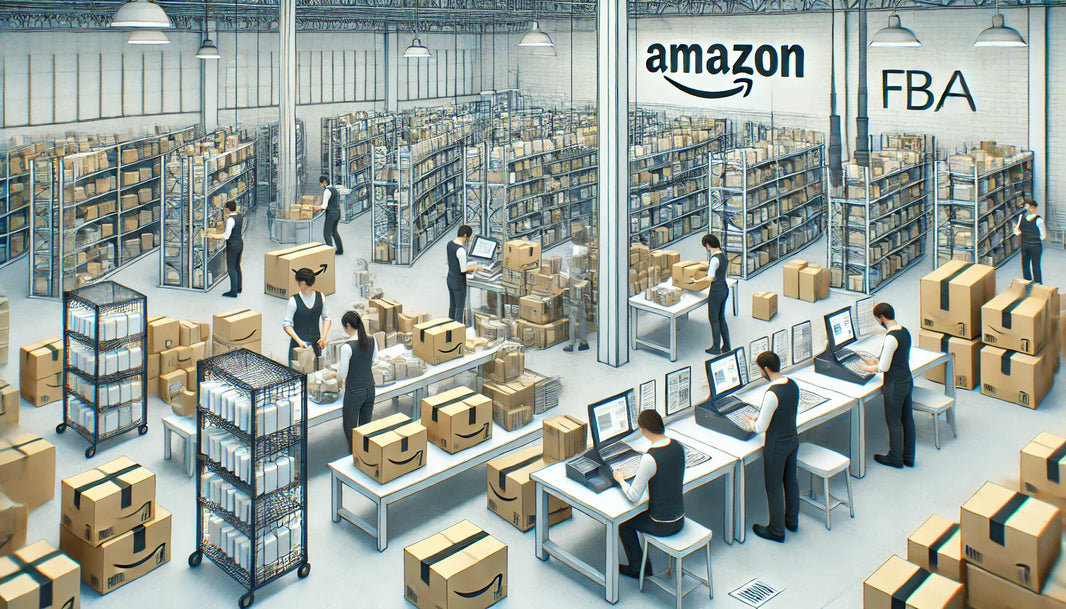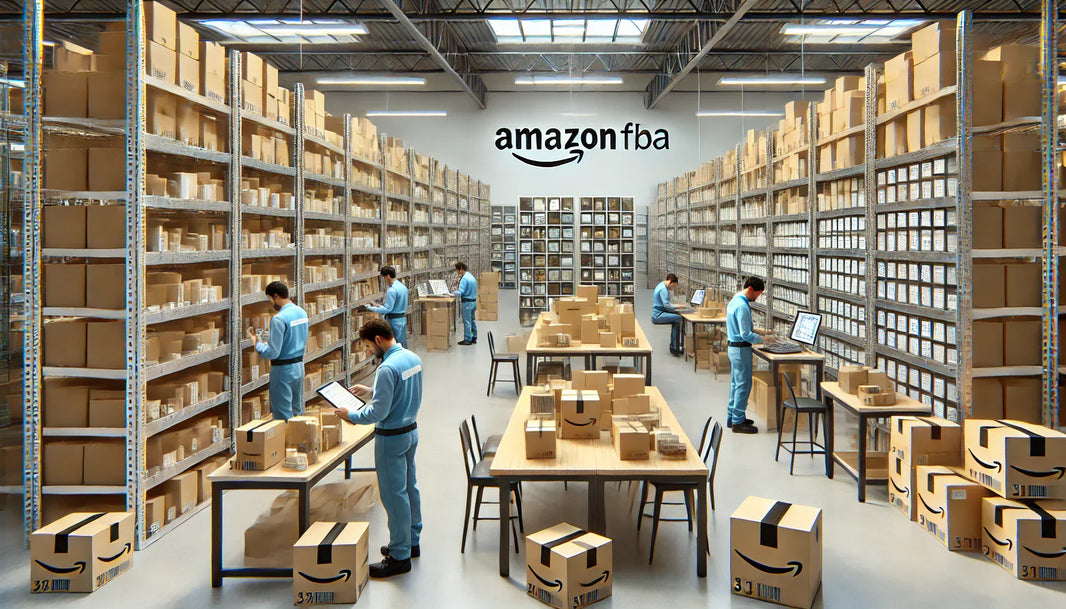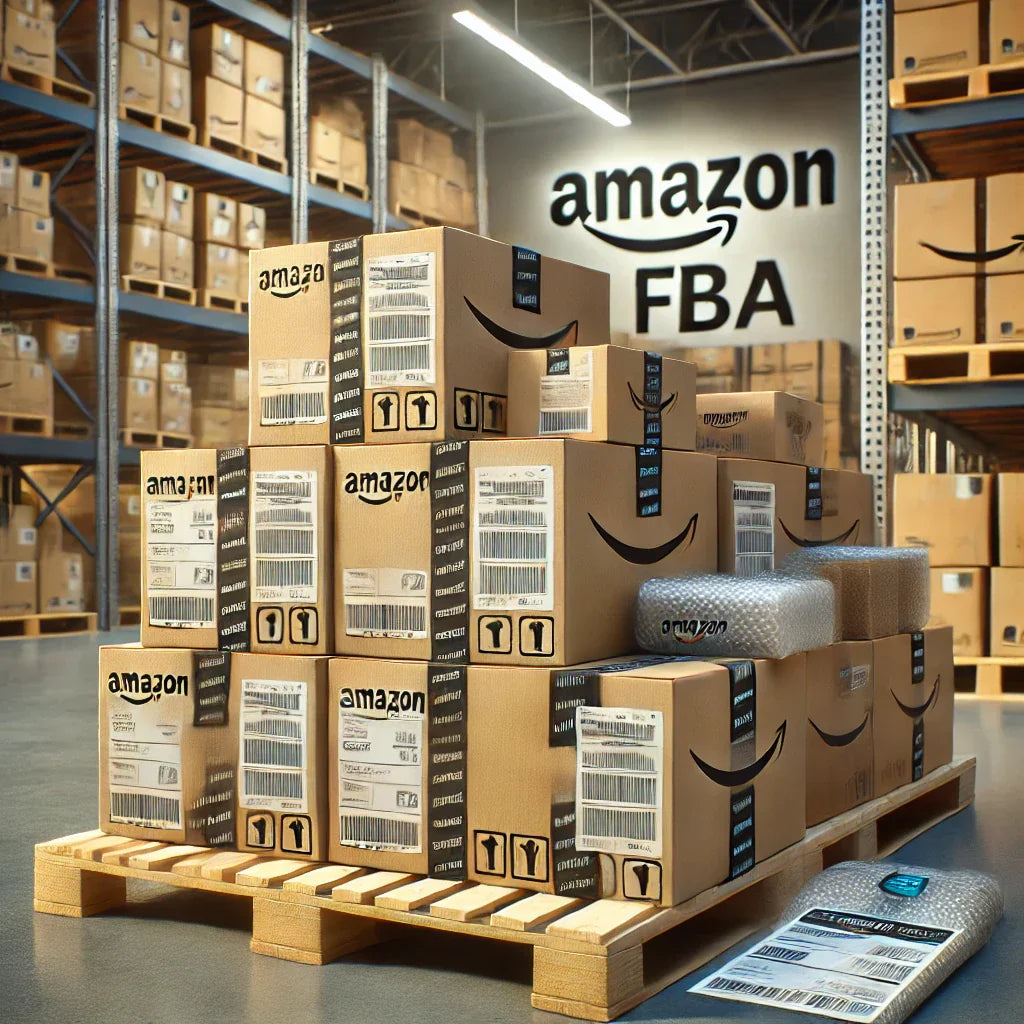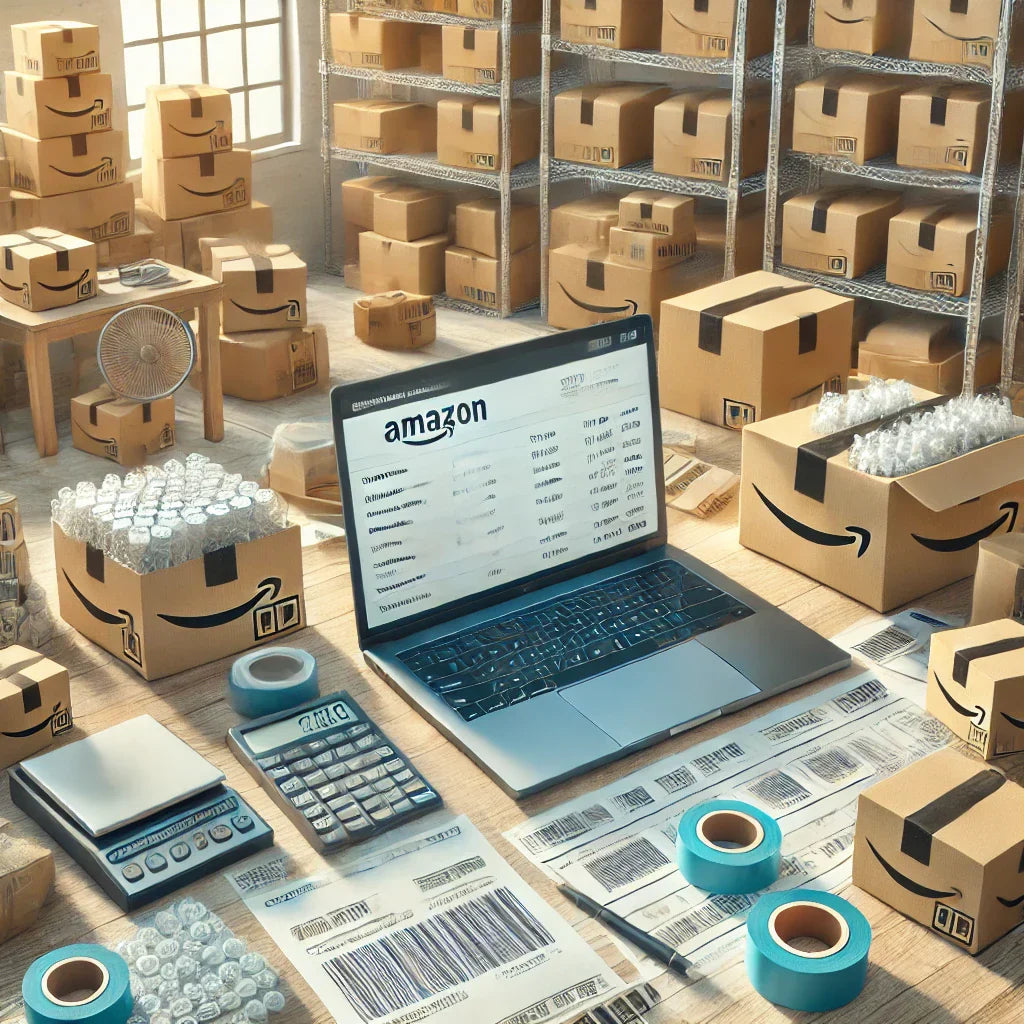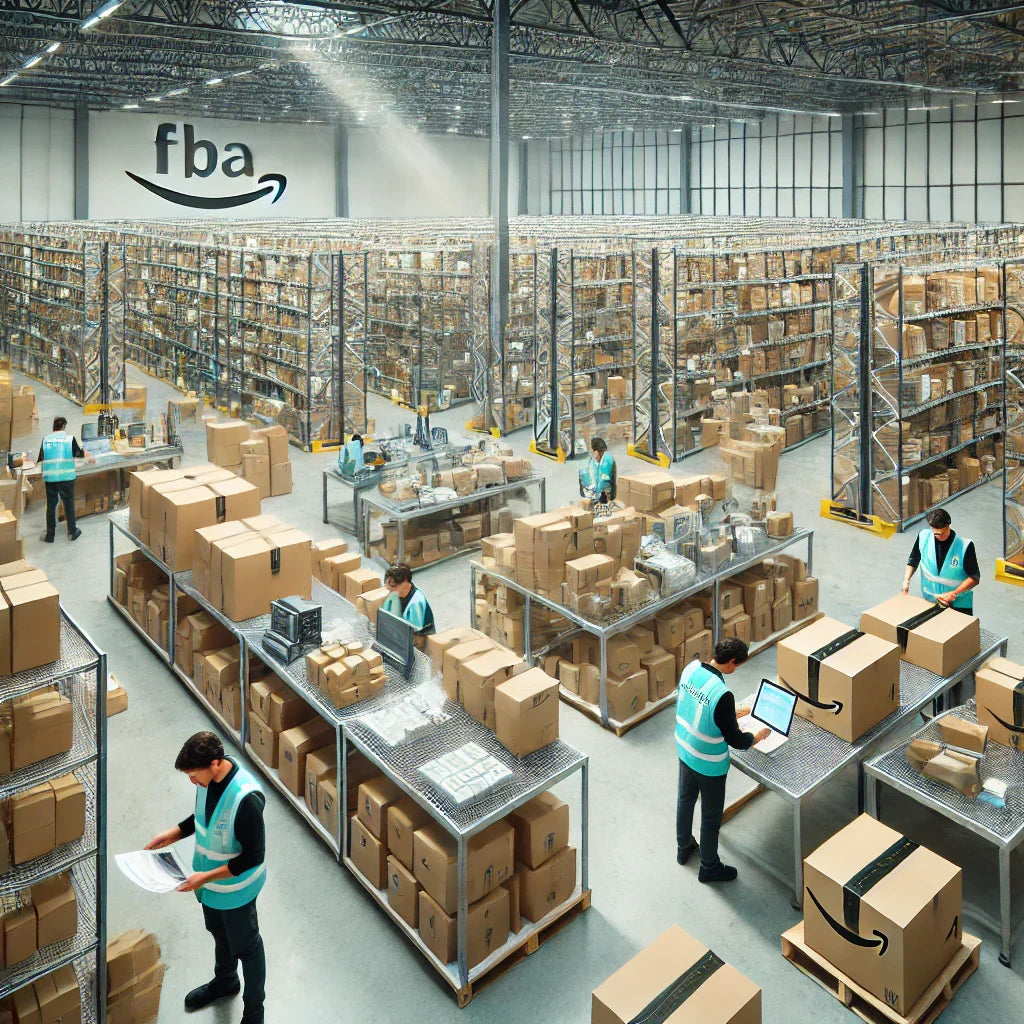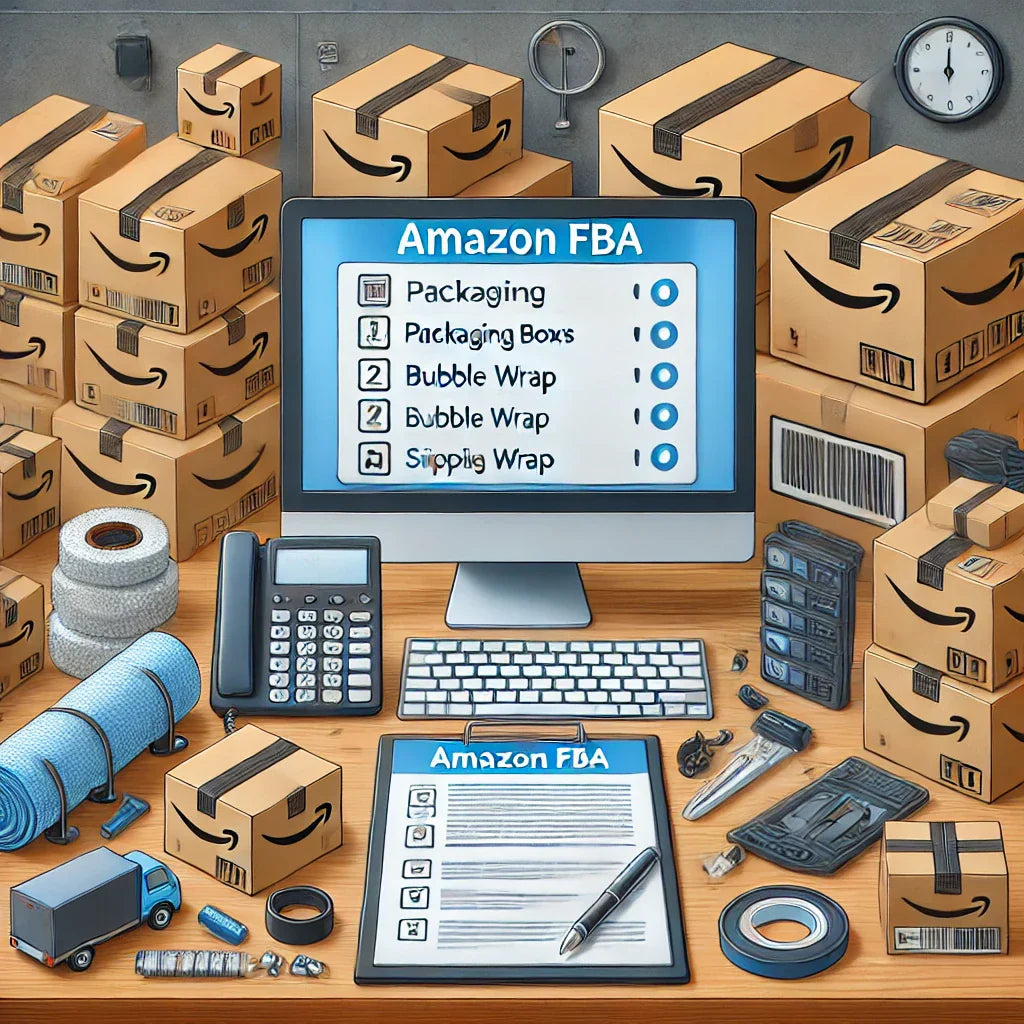In today’s fast-paced and increasingly complex business environment, efficient logistics play a pivotal role in maintaining a competitive edge. For many companies, managing the intricacies of warehousing, inventory, and shipping in-house can quickly become overwhelming and costly. This is where Third-Party Logistics (3PL) providers come into play. By outsourcing logistics functions to a specialized 3PL partner, businesses can streamline operations, reduce costs, and focus more on their core activities. But what exactly is 3PL, and how does it work? In this comprehensive guide, we’ll explore the ins and outs of third-party logistics, detailing how 3PL services function, the types of solutions available, and the significant benefits they bring to businesses of all sizes. Whether you’re considering a 3PL for the first time or looking to deepen your understanding, this guide covers everything you need to know about third-party logistics and its critical role in today’s supply chain.

Evaluating the Right 3PL for Your Business
Selecting a 3PL provider requires careful evaluation. Here are key factors to consider when assessing potential providers:
1. Service Range and Flexibility
The right 3PL should offer services that align with your current needs and the flexibility to grow with your business. Assess the range of services offered, from warehousing and transportation to more specialized solutions like kitting and reverse logistics.
2. Industry Experience and Reputation
Experience and a strong industry reputation are indicators of reliability. Seek 3PL providers with a proven track record in your industry, as they will be better equipped to meet your specific logistics requirements.
3. Cost Structure and Transparency
Transparent pricing models help businesses avoid unexpected costs. Look for providers that offer a clear breakdown of fees and avoid companies with ambiguous pricing structures.
4. Technology and Innovation
Choose a 3PL provider with advanced technology solutions that integrate with your existing systems. Modern logistics require real-time data access, so prioritize providers with capabilities like inventory tracking, analytics, and automated order management.
How 3PL is Shaping the Future of Supply Chain Management
3PL is no longer just a logistics solution—it’s a strategic enabler in the evolving landscape of supply chain management. As businesses increasingly rely on 3PL providers, the industry is experiencing rapid advancements in areas like automation, artificial intelligence, and data analytics. Some emerging trends include:
1. Automation and Robotics
Automated technologies are enhancing 3PL efficiency in tasks like sorting, packing, and transporting goods within warehouses. Robotics allow for faster, more accurate handling of inventory, reducing labor costs and improving service speed.
2. Data-Driven Decision Making
3PL providers are utilizing big data analytics to make data-driven decisions that optimize routes, predict demand, and streamline operations.
3. Data-Driven Decision Making in 3PL
3PL providers are leveraging big data analytics to refine decision-making processes, optimizing routes, predicting demand fluctuations, and streamlining operations to provide faster, more efficient service. This data-centric approach allows for real-time adjustments based on market changes, helping businesses stay agile and responsive. For instance, predictive analytics can forecast peak seasons and help 3PL providers allocate resources accordingly, ensuring seamless operations during high-demand periods. Companies also benefit from data that can highlight inefficiencies in their supply chain, enabling continuous improvement.
4. Sustainability Initiatives in 3PL
Sustainability is becoming increasingly essential in logistics, as consumers demand environmentally friendly practices. Many 3PL providers are investing in sustainable initiatives, such as carbon offset programs, energy-efficient warehouses, and electric vehicles. By choosing a 3PL provider committed to sustainability, businesses can reduce their environmental footprint and align with consumer expectations. For example, some 3PLs are introducing green packaging options, reducing plastic use, and implementing circular logistics systems that focus on resource reuse and waste reduction.
5. Omnichannel Fulfillment and 3PL
With the growth of e-commerce, omnichannel fulfillment has become a cornerstone of modern retail. Today’s consumers expect seamless experiences across various channels, from online stores to physical outlets. 3PL providers play a critical role in omnichannel fulfillment, offering integrated solutions that manage inventory across multiple platforms, handle in-store pickups, and facilitate fast delivery options. For instance, some 3PLs enable direct-to-store shipping or buy-online-pick-up-in-store (BOPIS) models, ensuring that customers can access their purchases in the most convenient way possible.
Security and Compliance in Third-Party Logistics
When outsourcing logistics, security and regulatory compliance are paramount concerns. 3PL providers handle sensitive customer data and high-value inventory, which requires robust security measures and adherence to local and international regulations. Here’s how 3PL providers address these critical aspects:
1. Data Security and Privacy
With the rise of digital commerce, data security is a high priority for both businesses and 3PL providers. Reputable 3PL companies employ strict data protection protocols, including encryption, secure data storage, and adherence to data privacy regulations like the General Data Protection Regulation (GDPR). They often partner with cybersecurity firms to ensure that customer data and transaction information are secure from unauthorized access.
2. Inventory Protection and Risk Management
3PL providers implement advanced security protocols within warehouses to protect inventory. This may include surveillance cameras, restricted access areas, and real-time tracking systems. Some providers also offer inventory insurance as an added layer of protection against unforeseen events such as natural disasters, theft, or damage.
3. Regulatory Compliance and International Shipping
International shipping requires strict compliance with customs regulations, tariffs, and import/export laws. 3PL providers, especially those specializing in freight forwarding, are well-versed in navigating these complexities. By handling customs documentation, regulatory compliance, and trade agreements, 3PL providers minimize the risk of costly shipping delays and legal issues, allowing businesses to focus on other aspects of their operations.
Integrating a 3PL Provider: Key Steps for a Successful Partnership
Establishing a successful relationship with a 3PL provider involves more than just signing a contract. A strategic, collaborative approach can help businesses maximize the benefits of 3PL services. Here are key steps for integrating a 3PL provider effectively:
1. Define Goals and Expectations
Before partnering with a 3PL, it's essential to identify specific goals and set measurable expectations. Whether the aim is to improve delivery times, reduce logistics costs, or expand into new markets, having clear objectives will guide the selection process and help both parties align on a shared vision.
2. Establish Communication Channels
Open communication is fundamental to any successful 3PL partnership. Regular updates, real-time reporting, and clear channels for problem resolution ensure that businesses can stay informed about logistics operations. Many 3PL providers offer dedicated account managers or customer portals, giving clients easy access to information and a direct line of communication for inquiries and adjustments.
3. Create Detailed Service-Level Agreements (SLAs)
Service-Level Agreements (SLAs) are critical for defining the scope of services and performance standards expected from a 3PL provider. SLAs should cover metrics like order accuracy, shipping timelines, and customer service response rates, creating accountability and ensuring high standards are maintained. A well-defined SLA not only protects the business but also helps the 3PL provider understand their role in achieving business objectives.
4. Implement Technology Integration
One of the biggest challenges in 3PL partnerships is technology integration. Ensuring that the 3PL provider’s systems can communicate effectively with the business’s internal systems is essential for seamless operations. This integration often includes connecting warehouse management systems (WMS), transportation management systems (TMS), and inventory tracking platforms. Working closely with the 3PL provider’s IT team to develop an integration plan can help avoid potential disruptions and maintain data consistency.
5. Monitor Performance and Adapt Strategies
Monitoring performance against established KPIs is crucial for a successful partnership. Regularly review metrics related to fulfillment times, accuracy, and customer satisfaction to evaluate the 3PL’s performance. If certain KPIs are not being met, it may be necessary to adjust strategies or provide additional resources to improve efficiency. Successful 3PL partnerships are flexible, with both parties willing to adapt to changing demands and performance needs.
Common Misconceptions About 3PL Providers
While 3PL services are well-established, there are still misconceptions that may deter businesses from exploring this valuable resource. Clarifying these misunderstandings can help businesses make informed decisions:
1. 3PL is Only for Large Enterprises
A common misconception is that only large corporations benefit from 3PL services. In reality, many 3PL providers cater specifically to small and medium-sized businesses (SMBs), offering scalable, customizable solutions that fit their unique needs. Small businesses often find 3PL services valuable for expanding reach without investing heavily in infrastructure, giving them access to warehousing, shipping discounts, and sophisticated logistics technologies.
2. Outsourcing Leads to Quality Control Issues
Some businesses worry that outsourcing logistics will lead to a decline in quality or customer satisfaction. However, with the right SLAs and performance metrics, businesses can maintain strict quality standards while enjoying the efficiency of a 3PL. Many providers offer customizable services and dedicated account managers to ensure that outsourced logistics align closely with the business's quality expectations.
3. 3PLs Lack Industry-Specific Expertise
Some companies hesitate to work with 3PLs, fearing a lack of understanding of their industry’s unique logistics needs. However, there are 3PL providers specializing in various sectors, from healthcare to technology. These specialized 3PLs bring deep expertise, regulatory knowledge, and tailored solutions that meet industry-specific requirements.
![]()
Case Studies: Real-World Success Stories with 3PL
To illustrate the impact 3PL providers can have, let’s look at a few examples of companies that transformed their logistics operations through 3PL partnerships:
1. E-Commerce Expansion with 3PL Fulfillment
An online retailer experiencing rapid growth partnered with a 3PL provider specializing in e-commerce fulfillment. By outsourcing inventory management, order fulfillment, and shipping, the retailer scaled its operations quickly and improved delivery times. With real-time inventory tracking and automated restocking, the retailer maintained high stock availability and met increased customer demand, ultimately boosting customer satisfaction and repeat business.
2. Seasonal Demand Management in Retail
A fashion retailer faced seasonal demand spikes during holiday seasons, putting strain on its in-house logistics team. The retailer partnered with a 3PL provider that could scale warehouse resources and labor in response to these peaks. By leveraging the 3PL’s flexible workforce and advanced warehouse technology, the retailer handled increased order volumes seamlessly, reducing holiday shipping times and enhancing the customer experience.
3. Global Expansion for a Technology Company
A technology company aiming to enter international markets faced logistical challenges, from managing customs documentation to meeting varied regulatory requirements. Partnering with a 3PL provider specializing in global logistics allowed the company to expand into multiple new markets without the complexities of managing international shipping. The 3PL managed customs compliance, freight forwarding, and last-mile delivery, enabling the tech company to deliver products reliably worldwide.
Key Trends Driving Innovation in the 3PL Industry
As the 3PL industry grows, innovation continues to play a central role in shaping how providers deliver logistics solutions. Here are some key trends that are expected to influence 3PL services in the coming years:
1. Artificial Intelligence and Machine Learning
AI and machine learning are revolutionizing logistics operations, enabling 3PL providers to automate decision-making processes and optimize supply chain efficiency. For example, AI-driven algorithms can analyze historical data to forecast demand accurately, helping 3PLs allocate resources more effectively and minimize delays. Machine learning also improves inventory management by identifying patterns that may indicate a need for replenishment, reducing stockouts and improving service quality.
2. Blockchain for Enhanced Transparency
Blockchain technology is gaining traction in logistics due to its ability to create transparent, tamper-proof records of every transaction along the supply chain. In a 3PL context, blockchain enhances transparency by allowing all stakeholders, including shippers, customers, and carriers, to access real-time updates and verify the authenticity of products. This is particularly beneficial for industries with strict regulatory requirements, such as pharmaceuticals, where product traceability is crucial.
3. Internet of Things (IoT) for Real-Time Tracking and Optimization
The Internet of Things (IoT) is reshaping logistics by allowing real-time monitoring of shipments, assets, and equipment. In the 3PL sector, IoT-enabled devices—such as GPS trackers, RFID tags, and temperature sensors—play a crucial role in managing inventory and ensuring safe, timely delivery. For instance, IoT devices can track the location of a shipment in real-time, enabling immediate adjustments in case of delays or rerouting needs. Temperature-sensitive shipments, such as pharmaceuticals or perishable foods, can be continuously monitored to ensure they remain within safe temperature ranges.
This heightened visibility not only enhances customer satisfaction but also improves asset management, enabling 3PL providers to allocate resources more effectively. With IoT data, providers can optimize routes, predict maintenance needs, and reduce fuel consumption, ultimately lowering costs and environmental impact.
4. Cloud Computing for Seamless Data Integration
Cloud computing has become essential for 3PL providers, offering scalable, secure solutions for data storage and processing. By leveraging cloud technology, 3PL providers facilitate real-time data sharing among all stakeholders in the supply chain, from manufacturers to end customers. This seamless integration is especially valuable for businesses managing complex supply chains across multiple regions.
For example, a 3PL provider can utilize cloud-based platforms to provide clients with access to centralized data, enabling real-time updates on inventory levels, shipping statuses, and delivery timelines. With cloud technology, both the 3PL and the client can access essential information from anywhere, making logistics operations more transparent and efficient.
5. Autonomous Vehicles and Drone Deliveries
The rise of autonomous vehicles and drones is transforming logistics by introducing new methods for last-mile delivery. Some 3PL providers are already experimenting with autonomous trucks for long-haul freight transportation, which can operate around the clock without driver fatigue, potentially lowering costs and reducing delivery times. Drones, on the other hand, are ideal for reaching remote or hard-to-access areas, such as rural locations or crowded urban centers, where traditional vehicles may face obstacles.
Although still in the early stages, these technologies promise to revolutionize delivery methods in the coming years. As regulatory frameworks develop, autonomous vehicles and drones will likely become integral parts of 3PL services, improving efficiency and further reducing costs associated with human-operated deliveries.
Specialized Industry Applications of 3PL
3PL providers offer industry-specific solutions that address the unique logistics challenges faced by different sectors. Here are some examples of how 3PL services are tailored to meet specific industry requirements:
1. E-Commerce
E-commerce businesses rely heavily on 3PL providers to manage high volumes of orders, especially during peak seasons. With expertise in order fulfillment, warehousing, and rapid delivery, 3PLs support e-commerce companies by providing scalable solutions that can accommodate spikes in demand. E-commerce 3PLs are particularly valuable for implementing multi-channel fulfillment, allowing companies to reach customers on various platforms with minimal delay.
2. Healthcare and Pharmaceuticals
The healthcare industry requires specialized logistics to ensure that sensitive products, such as medications and medical equipment, are stored and transported under stringent conditions. 3PL providers in this sector offer temperature-controlled warehousing and transport, regulatory compliance expertise, and precise tracking capabilities. By maintaining strict adherence to industry regulations and employing specialized equipment, 3PL providers help healthcare companies maintain product integrity and patient safety.
3. Automotive
The automotive sector depends on 3PL providers to streamline the supply of parts and components, often using just-in-time (JIT) inventory management systems to reduce storage costs. 3PLs provide warehousing, consolidation, and timely delivery of parts to manufacturing facilities, enabling automotive companies to meet production schedules efficiently. Many automotive-focused 3PLs also offer reverse logistics services, facilitating the return and recycling of parts.
4. Retail
Retailers frequently turn to 3PL providers to manage inventory across multiple stores, warehouses, and fulfillment centers. By leveraging the 3PL’s warehousing and distribution networks, retailers can ensure timely restocking of products, meeting customer expectations without overstocking. 3PLs also provide last-mile delivery solutions, an essential aspect for retailers focused on providing fast, reliable delivery options to their customers.
Cost Considerations When Working with a 3PL
Understanding the cost structure of 3PL services is essential for businesses to manage their logistics budgets effectively. Here are some of the main factors that influence 3PL pricing:
1. Storage and Warehousing Fees
Warehousing fees are typically based on the amount of space occupied and the duration of storage. Some 3PLs charge a fixed rate per pallet or per square foot, while others may offer tiered pricing based on volume or storage duration. Seasonal storage demands may also impact pricing, with higher rates during peak periods.
2. Fulfillment and Handling Fees
Order fulfillment fees cover the costs associated with picking, packing, and shipping products. These fees vary based on the complexity of the order, such as the number of items, type of packaging, and any special handling requirements. Some 3PL providers charge per order, while others may use a variable rate based on order volume or weight.
3. Transportation and Shipping Costs
Shipping costs are one of the most significant expenses in logistics. 3PL providers often negotiate discounted rates with carriers due to their high shipment volumes, passing some of these savings on to clients. Shipping fees vary based on factors like distance, shipment size, mode of transport (e.g., ground, air, sea), and any special delivery requirements, such as expedited shipping or temperature control.
4. Technology and Integration Fees
Many 3PL providers charge technology fees to cover the cost of integrating their systems with the client’s platforms. This may include fees for software setup, data integration, or ongoing use of warehouse management and tracking systems. Advanced technology solutions, like IoT tracking or custom analytics, may also carry additional costs.
5. Additional Value-Added Services
3PLs offer a variety of value-added services, such as custom packaging, kitting, and labeling. These services are often charged separately and can vary based on the complexity and volume of requests. Businesses should evaluate the necessity of these services in relation to their budget and customer experience goals.
![]()
Global Impact of 3PL on Modern Supply Chains
The growth of the 3PL industry is reshaping global supply chains, offering businesses access to international markets and enhancing operational efficiency worldwide. Here’s how 3PL providers are making an impact on a global scale:
1. Enabling Market Expansion
For businesses seeking to enter new markets, 3PL providers offer a cost-effective solution for managing international logistics. By handling tasks such as customs clearance, currency exchanges, and regional compliance, 3PLs make it easier for companies to expand without establishing an in-house logistics infrastructure abroad. This access to global logistics expertise enables businesses of all sizes to reach new customers in different countries, growing their brand presence and market share.
2. Reducing Global Environmental Impact
3PL providers are increasingly focused on sustainability, adopting practices that reduce environmental impact across supply chains. Many providers are optimizing routes to reduce fuel consumption, using eco-friendly packaging materials, and investing in electric or hybrid delivery vehicles. As a result, companies can reduce their carbon footprint, contributing to a more sustainable global economy.
3. Supporting Disaster Recovery and Risk Management
Global supply chains are susceptible to disruptions caused by natural disasters, geopolitical tensions, and other unforeseen events. 3PL providers are skilled in risk management and disaster recovery, using advanced forecasting tools and diversified logistics networks to minimize the impact of these disruptions. By working with a 3PL, businesses can build resilience into their supply chains, ensuring continuity even during challenging times.
4. Strengthening Emerging Markets
3PL providers play a crucial role in supporting emerging markets by offering logistics solutions that promote economic development. By providing affordable warehousing, transportation, and supply chain management services, 3PLs enable businesses in emerging economies to participate in global trade, creating jobs and stimulating growth.
How to Transition from In-House Logistics to 3PL
Transitioning from in-house logistics to a 3PL provider requires careful planning to ensure a smooth transition and minimal disruption. Here’s a step-by-step guide to facilitate this change:
1. Assess Current Logistics Needs and Capabilities
Before making the switch, conduct a comprehensive assessment of your current logistics operations, identifying areas where a 3PL could add value. Consider factors such as volume, inventory management, order fulfillment speed, and cost, as these will guide your selection of the right 3PL provider and help set realistic expectations.
2. Establish a Transition Timeline
A phased transition can help minimize disruptions during the changeover. Start by outsourcing one aspect of logistics, such as transportation or warehousing, then gradually integrate additional functions. Creating a clear timeline with defined milestones will help keep the transition process organized and ensure a smooth shift to 3PL management.
3. Document and Standardize Processes
Documenting standard operating procedures (SOPs) is critical when outsourcing logistics. Clear SOPs ensure that the 3PL provider understands your specific requirements and can adhere to established practices. This documentation should cover aspects like order processing, inventory management, customer service protocols, and quality control standards.
4. Train Internal Teams
Integrating a 3PL into your operations will likely require adjustments from your in-house teams. Provide training on how to collaborate effectively with the 3PL provider, and establish clear communication channels for reporting issues or requesting updates. Training sessions can help in-house staff understand the new workflows, leading to more efficient collaboration.
Selecting the Right 3PL Provider: Essential Criteria
Choosing the right 3PL provider is a crucial decision that will significantly impact your logistics efficiency and customer satisfaction. Not all 3PL providers offer the same range of services or possess the expertise necessary for different industries. Here are essential factors to consider when selecting a 3PL partner:
1. Alignment with Business Goals
It’s vital to choose a 3PL provider whose strengths align with your business goals and logistics needs. If your primary objective is to improve delivery speed, look for a 3PL with extensive transportation networks and quick fulfillment capabilities. For businesses prioritizing cost savings, a provider with competitive shipping rates and efficient warehousing options may be ideal. Understanding your primary logistics objectives will help narrow down providers that offer targeted services.
2. Industry Experience
A 3PL provider with experience in your industry will be familiar with your specific logistical requirements and challenges. For example, if you are in the food industry, selecting a 3PL with expertise in perishable goods and temperature-controlled logistics is essential. Specialized providers often have a deeper understanding of industry regulations, packaging standards, and safety requirements, making them more reliable partners.
3. Technology Integration Capabilities
A 3PL’s ability to integrate with your existing technology systems—such as ERP, CRM, or inventory management software—is critical for maintaining real-time visibility and efficiency in logistics. Ensure that the provider’s technology is compatible with yours, allowing seamless data flow and transparent tracking across platforms. Some 3PL providers offer custom APIs or advanced integrations, which can be especially beneficial for businesses relying on automation and data analytics.
4. Scalability and Flexibility
Your logistics needs will likely fluctuate over time, especially if your business experiences seasonal peaks or rapid growth. A 3PL provider should offer scalable solutions, allowing you to increase or decrease storage space, labor, and shipping volume as needed. Flexibility is also crucial if you anticipate expanding into new regions, product lines, or channels, as a 3PL with adaptive services can grow alongside your business.
5. Financial Stability and Reputation
Selecting a financially stable 3PL provider with a strong reputation reduces the risk of disruptions in service. Look for providers with a solid track record, positive client reviews, and transparent business practices. Checking references, reading case studies, and reviewing their client list can provide insight into their performance reliability and customer satisfaction.
6. Customer Service Quality
The responsiveness and quality of customer service from a 3PL provider are essential to ensure that issues are resolved quickly. Inquire about their support structure, availability of dedicated account managers, and escalation processes. A provider with high-quality customer service can be a valuable partner, ensuring that logistics processes remain smooth and minimizing delays caused by communication gaps.
Best Practices for Effective Collaboration with a 3PL
Once you’ve chosen a 3PL provider, maintaining a collaborative, transparent relationship is essential for a successful partnership. Below are best practices to optimize your collaboration with a 3PL provider:
1. Regular Performance Reviews
Conducting regular performance reviews with your 3PL provider helps ensure that they meet key performance indicators (KPIs) such as order accuracy, delivery speed, and customer satisfaction rates. Monthly or quarterly reviews provide an opportunity to assess performance trends, address any issues, and adjust strategies as necessary to improve efficiency.
2. Data Sharing and Transparency
Establishing transparent data-sharing protocols with your 3PL provider enables both parties to access critical information and make data-driven decisions. By sharing sales forecasts, product launch schedules, and marketing plans, you enable the 3PL to prepare resources in advance, ensuring they can meet anticipated demand. Real-time data access also improves visibility, allowing for prompt responses to any logistics disruptions.
3. Continuous Process Improvement
A proactive approach to logistics requires ongoing process evaluation and improvement. Collaborate with your 3PL provider to identify inefficiencies, such as frequent shipping delays or high return rates, and develop solutions. Periodically revisit SLAs and SOPs to ensure they reflect current business goals and market dynamics, allowing for a more adaptive and resilient logistics operation.
4. Effective Communication Channels
Establishing clear and efficient communication channels is crucial for real-time issue resolution. Dedicated points of contact, regular check-in calls, and shared communication platforms can help both parties address operational challenges promptly. Some 3PL providers offer customer portals where clients can track shipments, manage inventory, and request support, creating a centralized hub for all logistics information.
5. Training and Knowledge Sharing
Providing your 3PL partner with regular training on your products, brand values, and customer service standards can help align their services with your brand experience. Many businesses overlook the importance of educating their 3PL on their unique operational nuances. By sharing knowledge about your products and business processes, you enable your 3PL to deliver a more cohesive and customer-focused service.
![]()
Conclusion
In conclusion, third-party logistics (3PL) providers play a transformative role in modern supply chain management, offering businesses the flexibility, expertise, and technology necessary to compete in a rapidly evolving marketplace. By outsourcing logistics functions, companies can reduce operational costs, streamline processes, and refocus resources on core competencies that drive growth. However, a successful 3PL partnership requires careful selection, clear communication, and ongoing performance evaluation to ensure alignment with business goals and customer expectations.
As technology continues to advance, with innovations like AI, IoT, and blockchain shaping the future of logistics, the role of 3PL providers is set to become even more strategic and impactful. Businesses of all sizes stand to benefit from these developments, gaining unprecedented visibility, efficiency, and scalability in their supply chains. By choosing the right 3PL provider and fostering a collaborative, data-driven relationship, companies can achieve sustainable growth and resilience in a global market. Whether you're a small business venturing into e-commerce or a large corporation expanding internationally, partnering with a capable 3PL provider can be the key to unlocking your logistics potential and delivering exceptional customer experiences.
Read More
-
The Benefits of 3PL: Why Your Business Should Consider Third-Party Logistics
- 3PL vs. 4PL: Understanding the Differences and Choosing the Right Solution
- How to Choose the Best 3PL Provider for Your Business Needs
- The Future of 3PL: Trends and Innovations in Third-Party Logistics
- Common Challenges in 3PL and How to Overcome Them
- 3PL Pricing Explained: What to Expect and How to Optimize Costs


